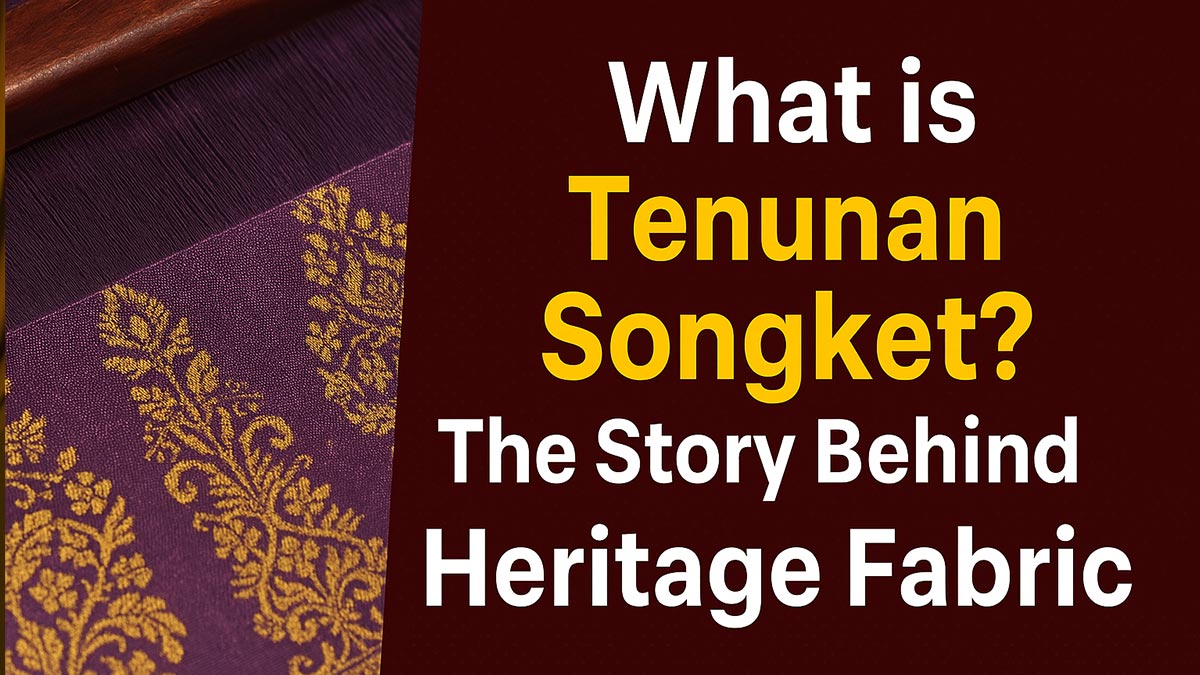What is Tenunan Songket? The Story Behind This Heritage Fabric
Tenunan Songket is a luxurious, handwoven textile that embodies the rich cultural heritage of the Malay world. Intricately crafted with gold or silver threads, songket is more than just fabric—it’s a symbol of tradition, artistry, and identity.
🧵 What Is Tenunan Songket?
The term songket comes from the Malay word sungkit, meaning “to hook.” It refers to the weaving technique of inserting gold or silver threads into the fabric to create ornate patterns. Traditionally made from silk or fine cotton, songket’s shimmering look is achieved using a supplementary weft weaving method that makes the motifs appear to float on the surface.
📜 Historical Origins
Srivijaya Empire Influence
Tenunan Songket dates back to the 7th-century Srivijaya Empire in South Sumatra, Indonesia. The capital, Palembang, is believed to be the birthplace of this tradition. Archaeological finds, including sculptures from Bumiayu temple, depict figures wearing textiles with songket-like motifs.
Cultural Exchanges
As trade flourished, so did the influence on songket. Chinese traders introduced silk, while Indian and Middle Eastern merchants brought metallic threads. This cross-cultural exchange enriched the weaving traditions and gave birth to the luxurious version we recognize today.
🌏 Regional Variations
Songket exists in various forms across Southeast Asia:
- Indonesia: Palembang songket is associated with royalty. Minangkabau weavers favor motifs like Pucuk Rebung (bamboo shoots).
- Malaysia: Terengganu and Kelantan are renowned for producing high-quality handmade songket with floral and geometric designs.
- Brunei: Worn by the nobility during royal ceremonies, reflecting prestige and elegance.
🎨 Symbolism and Motifs
Motifs in songket are rich in meaning and history:
- Bunga Tabur: Scattered flower design, symbolizing elegance and femininity.
- Pucuk Rebung: Bamboo shoots, representing growth and resilience.
- Bintang Beralih: A shifting star pattern, symbolizing hope and guidance.
🛠️ Weaving Process
Creating Tenunan Songket is labor-intensive and can take days to weeks depending on the complexity:
- Thread Preparation: Threads are selected, dyed, and measured.
- Base Weaving: The weaver creates a base cloth using a backstrap or frame loom.
- Weft Insertion: Gold or silver threads are hand-inserted to create the floating motifs.
🧭 Cultural Significance
Historically, songket was reserved for Malay royalty and aristocracy. It was worn during weddings, official ceremonies, and festivals. Even today, wearing songket signifies respect for tradition and cultural pride.
🌟 Modern Adaptations
Modern designers are reviving songket by blending traditional patterns with modern silhouettes—introducing songket in clutches, neckties, jackets, and high-fashion wear. This helps the craft appeal to younger generations while maintaining cultural roots.
🛡️ Preservation Efforts
In 2021, UNESCO recognized songket as part of the Representative List of the Intangible Cultural Heritage of Humanity. Efforts are underway across Southeast Asia to preserve this weaving tradition through training programs, cooperatives, and educational outreach.
Conclusion: Tenunan Songket is more than a beautiful textile—it’s a legacy of the Malay world. From royal courts to modern runways, this heritage fabric continues to shine. Through preservation and innovation, Songket lives on as a timeless art form.

